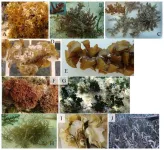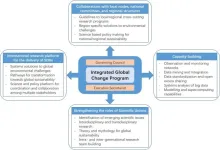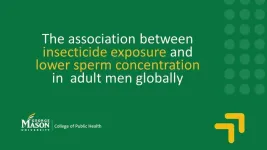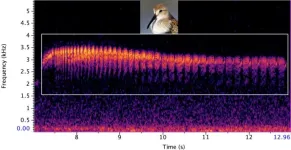Considering the molecular subtype of muscle-invasive bladder cancer (MIBC) based on differences in tumor RNA expression can improve the ability of an existing tumor biomarker such as the COXEN score to predict which patients’ tumors are likely to respond to chemotherapy given before surgery. Individual molecular subtypes, however, were not associated with significant differences in patients’ overall survival (OS) or progression-free survival (PFS) times.
Those are the conclusions from a secondary analysis of data from the S1314 clinical trial, a large study in patients with MIBC that was conducted by the SWOG Cancer Research Network, a clinical trials group funded by the National Cancer Institute (NCI), part of the National Institutes of Health (NIH). The results are published in the journal Clinical Cancer Research.
The authors argue that the findings confirm a need for prospective clinical trials that test the association of specific molecular subtypes with patient outcomes and that evaluate subtype-directed neoadjuvant therapy in these patients.
The lead author on the paper is Seth P. Lerner, MD, the Beth and Dave Swalm Chair in Urologic Oncology at Baylor College of Medicine and an investigator with the SWOG Cancer Research Network.
“S1314 presented a rich biorepository for hypothesis testing of additional predictive and prognostic biomarkers associated with pathologic response to cisplatin-based chemotherapy and PFS and OS,” Lerner said.
“Using the same Affymetrix RNA expression data used to generate COXEN scores, we tested three published subtyping schemes and found a modest improvement in predicting pathologic response but no association with PFS or OS, despite previous studies indicating that the basal/squamous subtype was associated with the most clinical benefit from chemotherapy. These observations support the need to design precision medicine trials for prospective assessment using subtypes to select therapy based on the expression profile for each subtype.”
Current cancer care guidelines recommend that patients slated for surgery for MIBC first get cisplatin-based neoadjuvant chemotherapy, but clinical trials have found that at least one-half of these patients may not derive a benefit from such chemotherapy, and it is not offered consistently. Identifying biomarkers that can predict whether a given patient is or is not likely to benefit should result in more effective use of neoadjuvant chemotherapy and better compliance to guidelines.
SWOG S1314 was the first prospective, randomized trial designed to test such a biomarker for these patients. The trial team reported that an RNA-based gene expression biomarker known as the COXEN GC score was associated with tumor downstaging when applied across those receiving either chemotherapy regimen. S1314 also found that the COXEN GC score has prognostic value for patients receiving cisplatin-based preoperative treatment.
Researchers studying bladder cancer have also identified a range of molecular subtypes, based on patterns in mRNA expression, that can be associated with disease prognosis. In the current work, Lerner and his colleagues investigated the use of these RNA-based molecular subtypes as potential additional biomarkers to use in conjunction with COXEN scores for predicting disease response to neoadjuvant chemotherapy and for predicting overall survival and progression-free survival in patients with MIBC.
Using data from the S1314 study, they compared molecular subtypes as identified by three subtype classification schemes. Applying each of these classifiers, the team assigned molecular subtypes to tumors from 155 of the patients enrolled to S1314. They then evaluated whether the resulting subtype provided added predictive power when considered along with COXEN score, tumor stage, patient performance status, and other measures known to be associated with outcomes.
They found that subtypes identified by one of these three classification schemes (the Consensus classifier) modestly improved their ability to predict whether a tumor would show pathologic response to neoadjuvant chemotherapy, although they found no added value in predicting patients’ progression-free or overall survival times.
The authors conclude that prospective clinical trials are needed to learn how subtypes are associated with patient outcomes and to test whether selecting therapy based on molecular subtype (subtype-directed therapy) can improve response to neoadjuvant therapy in these patients.
Lerner and several co-authors are part of a team now developing a protocol for a multi-arm platform clinical trial that will screen patients with MIBC to identify each tumor’s RNA-based subtype and then will use that subtype to assign patients to specific sub-studies. Each randomized sub-study will compare a standard neoadjuvant chemotherapy regimen to an investigational therapy targeted to the particular subtype. Researchers hope to launch this study, known as the SUBTYP trial, in the second half of 2024.
“Despite a wealth of retrospective cohort studies suggesting that the COXEN score stratified patients into low and high risk of disease progression and death,” Lerner added, “this was not validated in the prospective S1314 trial testing two cisplatin-based chemotherapy regimens that are standard of care. The SUBTYP trial will test a different strategy of using molecular subtypes based on RNA sequencing and a classifier developed by The Cancer Genome Atlas group for subtype directed neoadjuvant treatment.”
Study S1314 is supported by the NCI, led by SWOG, and conducted by the NIH-funded NCI National Clinical Trials Network (NCTN).
The work reported in this paper was funded by the NIH/NCI through grants U10CA180888, U10CA180819, UG1CA233196, UG1CA233328, UG1CA233320, UG1CA233324, UG1CA180830, and UG1CA233160.
In addition to Lerner, co-authors on the paper include David J. McConkey, Johns Hopkins School of Medicine; Catherine M. Tangen, SWOG Statistics and Data Management Center and Fred Hutchinson Cancer Center; Joshua J, Meeks, Feinberg School of Medicine, Northwestern University; Thomas W. Flaig, School of Medicine, University of Colorado; X. Hua, SWOG Statistics and Data Management Center and Fred Hutchinson Cancer Center; Siamak Daneshmand, Keck School of Medicine, University of Southern California; Ajjai Shivaram Alva, University of Michigan; M. Scott Lucia, School of Medicine, University of Colorado; Dan Theodorescu, Cedars-Sinai CANCER; Amir Goldkorn, University of Southern California; Matthew I. Milowsky, University of North Carolina Lineberger Comprehensive Cancer Center; W. Choi, Johns Hopkins School of Medicine; Rick Bangs, SWOG Cancer Research Network; Daniel L. Gustafson, Colorado State University; Melissa Plets, SWOG Statistics and Data Management Center and Fred Hutchinson Cancer Center; and Ian M. Thompson, Jr., CHRISTUS Medical Center Hospital, University of Texas Health Science Center at San Antonio.
SWOG Cancer Research Network is part of the National Cancer Institute's National Clinical Trials Network and the NCI Community Oncology Research Program and is part of the oldest and largest publicly funded cancer research network in the nation. SWOG has 20,000 members in 45 states and nine other countries who design and conduct clinical trials to improve the lives of people with cancer. SWOG trials have led to the approval of 14 cancer drugs, changed more than 100 standards of cancer care, and saved more than 3 million years of human life. Learn more at swog.org, and follow us on Twitter(X) at @SWOG.
Reference:
Lerner SP et al. “Association of Molecular Subtypes with Pathologic Response, PFS and OS in a Phase II Study of COXEN with Neoadjuvant Chemotherapy for Muscle-Invasive Bladder Cancer.” Clinical Cancer Research, DOI: 10.1158/1078-0432.CCR-23-0602 https://aacrjournals.org/clincancerres/article/doi/10.1158/1078-0432.CCR-23-0602/730040/Association-of-Molecular-Subtypes-with-Pathologic
END









